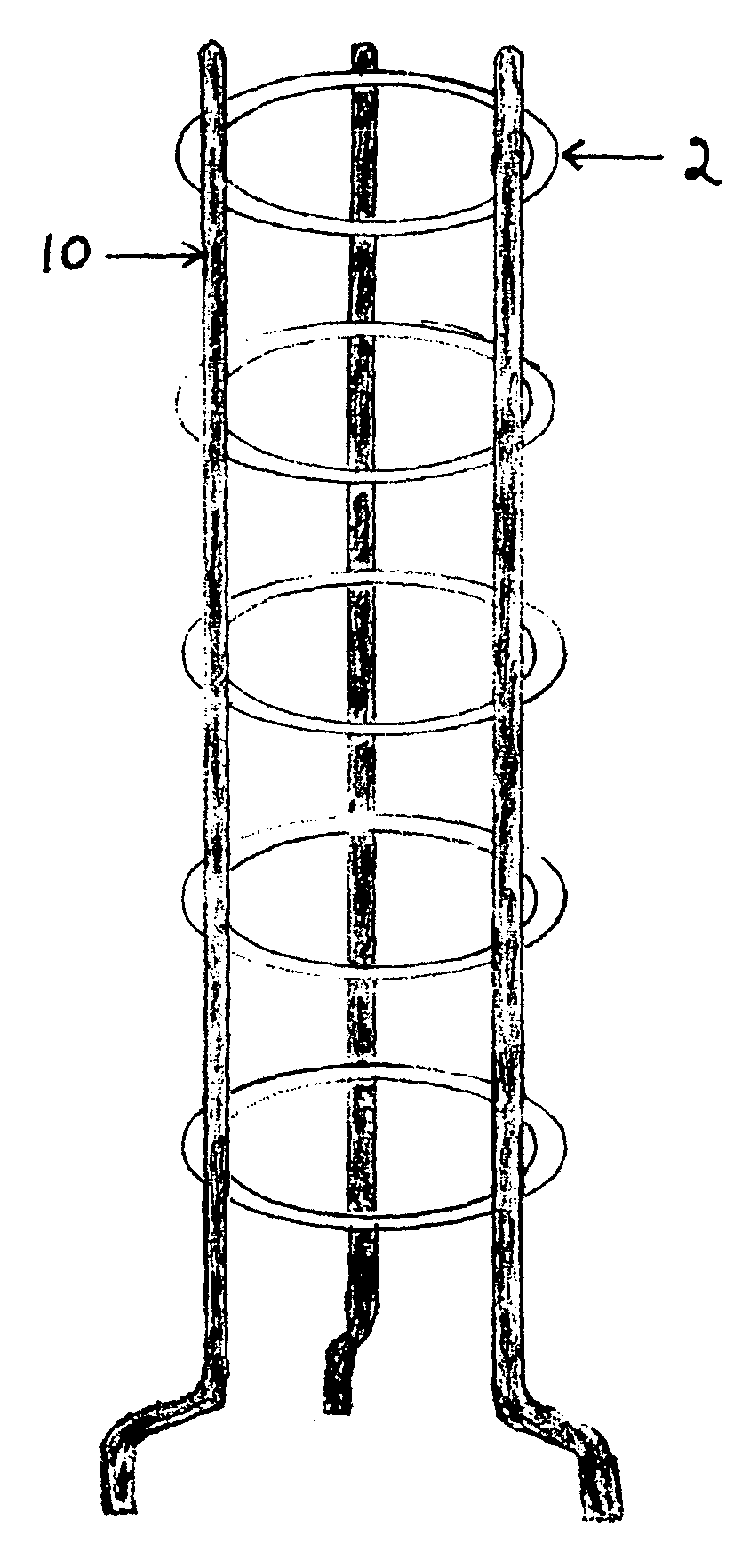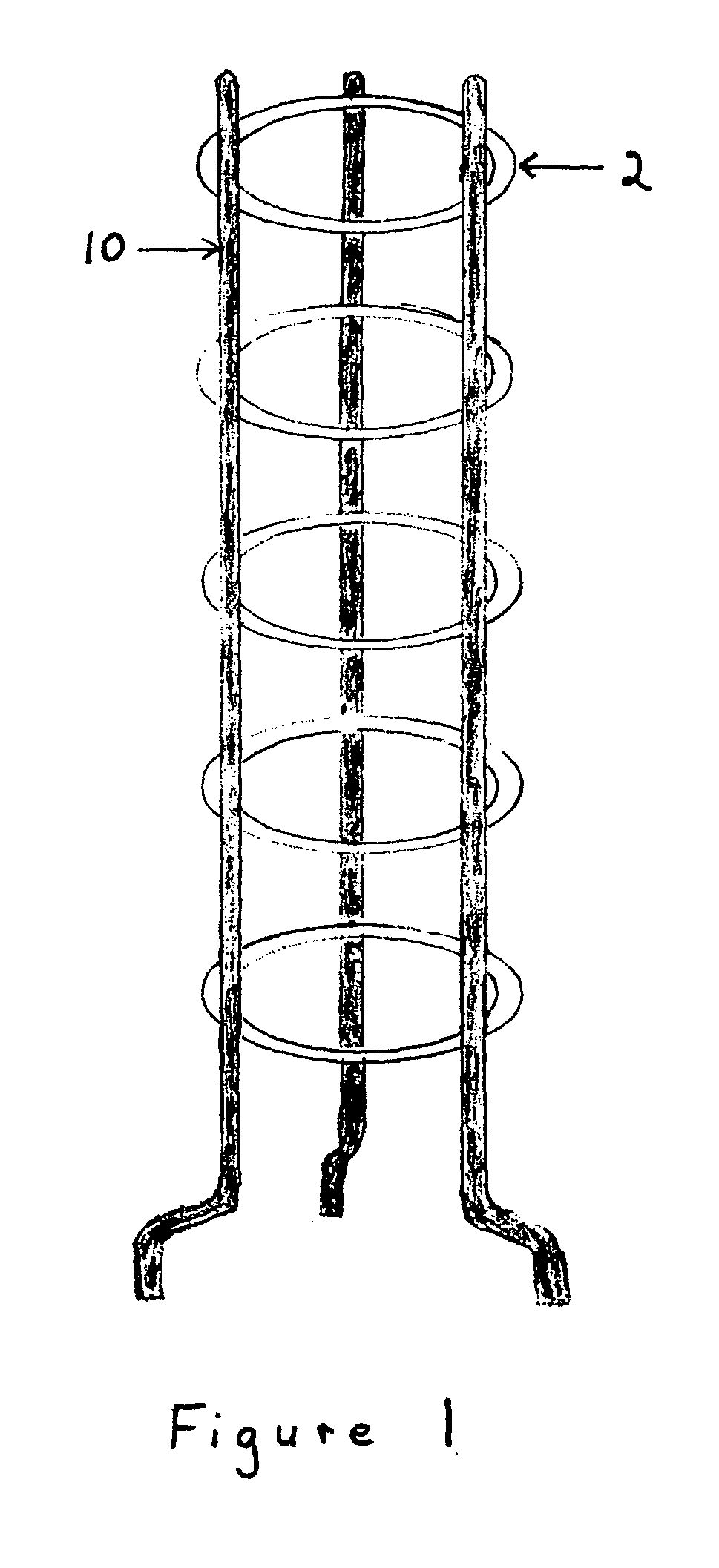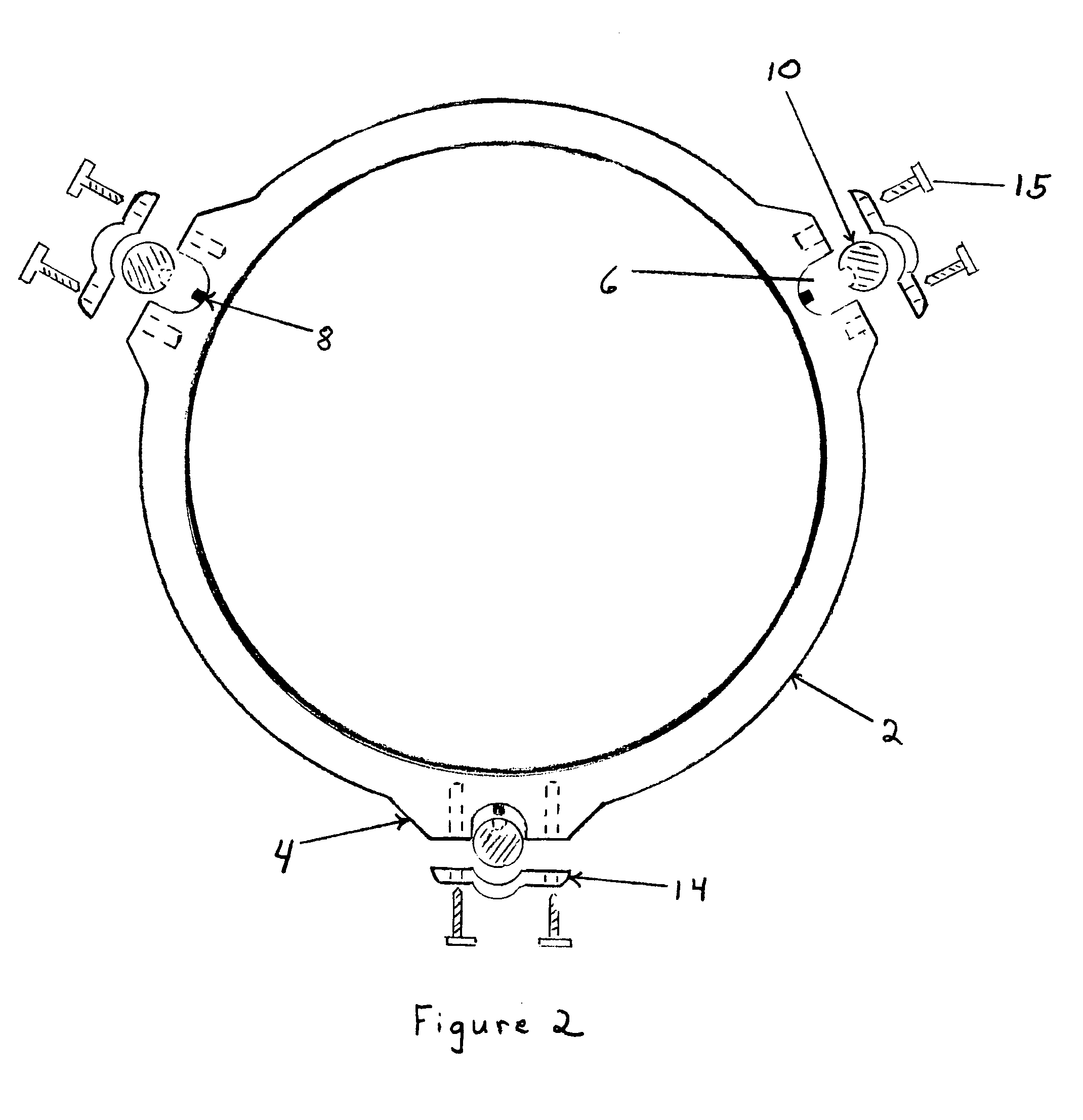[0002] This invention is a support
assembly for growing fruit and non-fruit bearing plants which require support to maximize growth and fruit production. Maximum absorption of
sunlight, space conservation and easy harvesting of clean fruit during the
growing season are key advantages of the present invention. Another major
advantage of the present invention is adjustability of the support assembly for plants of varying heights while also allowing for adjustment during the growth of the plant. A further advantage of the present invention is the ability to disassemble the device and store it compactly and conveniently until the next growing season.
[0003] Traditional support mechanisms range from wooden stakes to support cages made from concrete reinforcement wire. There are many disadvantages with these traditional support mechanisms. First, wooden stakes are subject to rot and tip over quite readily. They also can be carriers of
disease. Wood stakes require the grower to drive the stake into the ground sufficiently to hold the plant and its fruit. After that is done, the grower must devise a way to fasten the growing plant to the stake. Concrete reinforcement cages are hard to work with, offers no degree of adjustability, are subject to
rust and are bulky for winter storage. They are traditionally welded in a
solid construction and thus cannot be disassembled for storage.
[0005] Many patents exist with regard to the support of plants during their growth. U.S. Pat. No. 5,640,802 discloses a stackable assembly for plant support. U.S. Pat. No. 6,088,956 discloses a foldable structure for plant support. U.S. Pat. No. 5,179,799 discloses a demountable plant support structure. U.S. Pat. No. 6,385,901 discloses a three-panel support cage. U.S. Pat. No. 5,174,060 discloses a plant support with a rigidly attached, helically coiled support member. The above listed five structures limit the grower to setting up the
support system according to expected growth of a particular determinate or indeterminate variety of plant being grown in a specific warm or cool climate. The structures offer limited resistance to tipping of not only the structure, but also the plant and fruit when subjected to a moderate wind.
[0006] U.S. Pat. No. 4,860,489 discloses an adjustable plant support. This structure also has limited resistance to tipping over in a moderate wind. U.S. Pat. Nos. 4,519,162 and 4,534,129 disclose an adjustable, vertical plant support structure. This structure depends on driving the vertical support into the ground, which may be limiting to some growers in certain regions. SUMMARY OF THE INVENTION
[0007] It is the intention of this invention to provide plant support assembly that allows the grower to adjust the plant supporting hoops on the vertical uprights according to the expected
plant growth of any variety of plants. For example purposes, tomato plants will be described but this invention is in no way limited to use with only tomato plants. Tomato plants traditionally use some sort of support device in their growth since these plants grow rapidly and do not self support themselves when the weight of the plant and fruit becomes too much for the main plant to bear. An unsupported plant either bends and / or breaks under their own weight and the fruit becomes damaged by
lying on the ground. One of the main advantages of the present invention is to prevent damage to both the plant and any fruits it may bear.
[0008] The market for this invention ranges from the casual gardener to the larger commercial produce growers. The invention is intended to be marketed in individual pieces to help control costs but a kit of like elements is well within the scope of invention. The kitting option would consist of selling a predetermined number of support hoops and upright support sections packaged as a set. The
consumer could then purchase additional hoops and upright sections as required. This invention is intended to support any fruit or vegetable bearing plant and the added weight of the
ripening fruit. This support device would prevent tipping of the plant and fruit when subjected to a moderate wind. The present invention is intended to save space by converting a sprawling plant into an upright growth pattern. Another advantage of this invention is to make maximum use of sunlight absorption by leaves and allows for easy access to clean fruit that is less subjected to
disease, damage and ground dwelling creatures. The present invention also allows the support device to be easily disassembled and cleaned for winter storage.
 Login to View More
Login to View More  Login to View More
Login to View More 


